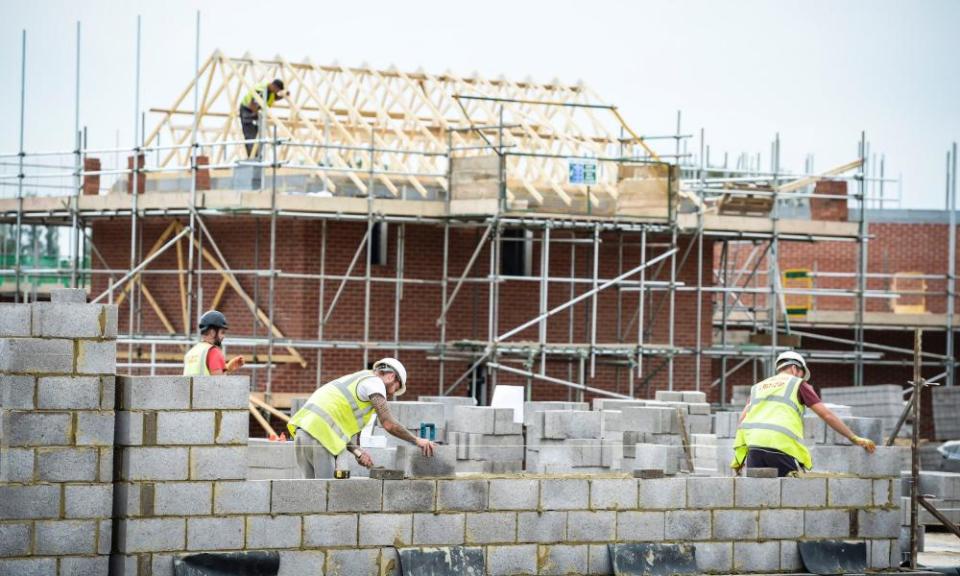UK construction sector rebounds amid plan for stamp duty holiday

Building firms expanded activity in June at the fastest pace in more than two years in June as the chancellor put the finishing touches to potential plans for a six-month stamp duty holiday.
Housebuilders accounted for the bulk of the uplift in construction after the PMI construction survey found that 46% of firms reported an increase in business compared with 27% that experienced a reduction.
Analysts said the urgency shown by housebuilders to get back on site was stronger than they expected, but firms were circumspect about the their prospects for the rest of the year, which forced them to cut jobs rather than bring workers back from furlough.
Aware of the difficulties faced by the industry, Rishi Sunak is expected to outline plans for a six-month stamp duty holiday when he reports to parliament this week on further schemes to support the economy as the lockdown eases.
Sunak is considering proposals to raise the threshold at which homebuyers start paying stamp duty, targeting the bottom end of the housing market.
Currently the levy is not charged on the first £125,000 of the property selling price, with a 2% rate up to £250,000 and 5% on the next £675,000.
The new threshold, which could stimulate demand through to spring next year, is likely to be set at somewhere between £300,000 and £500,000.
Last year house building reached a 30-year annual high of 241,000 homes, but level of new starts collapsed in the first six months of the year. Property firms have lobbied hard in recent weeks for tax breaks to boost demand, telling Sunak it is essential to prevent widespread job losses.
But a delay in implementing the tax break until the budget in the autumn was criticised by Paul Johnson, the head of the tax and spending watchdog the Institute for Fiscal Studies.
Johnson said a delay would encourage all buyers to wait until the tax break was available, effectively killing the housing market until that date.
He tweeted: “The chancellor now has only two choices. He must either cut stamp duty right away or rule out a cut in the autumn. To do otherwise could ruin the housing market for months to come.”
Sunak is also understood to be concerned that plans outlined in the spring budget for a rapid expansion of infrastructure building will be damaged by the Covid-19 lockdown and will be slow to get off the ground.
The IHS Markit/Cips construction purchasing managers’ Index (PMI) reported subdued activity from the civil engineering sector following a freeze on most public and private sector projects over the past four months.
While the sector-wide index rebounded to 55.3 from 28.9 in May, its highest since July 2018 and well above the 50 threshold for growth, activity in the civil engineering sector rose to only 52.4.
Howard Archer, the chief economic adviser to the EY Item Club, described the survey as “encouraging news for the UK economy”, noting that commercial activity also began to recover from all-time lows reached in April.
Andrew Wishart, the UK economics analyst at Capital Economics, was more cautious, arguing that the survey of construction managers along with last week’s responses from the manufacturing and services industries indicated a rebound from the unusual lows seen in recent months rather than more normal levels before the crisis.
“It appears activity is returning, but we are still some way below the pre-virus level,” he said.
“But what the survey tells us about the impact of the crisis on the labour market is unambiguous,” he added.
“While the employment balance of the all-sector PMI rose from 32 in May to 39.8 in June, it still suggests a sharp fall in employment is in store.
He said: “Indeed, barring a lengthening of the furlough scheme in the chancellor’s fiscal statement on Wednesday, we think that the unemployment will rise from 3.9% in April to a peak of 7% in mid-2021.”

 Yahoo Finance
Yahoo Finance 